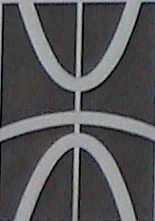|
|

|

|
|
|
|
|
|
|
|
Alexey Stoev [1], Penka Stoeva [1], Yavor Chapanov [2]
[1] Space Research and Technology Institute, BAS, Stara Zagora Department, Bulgaria
Abstract: The report presents the main results of Bulgaria's participation in theoretical and experimental research on the use of artificial satellites for the purpose of geodesy and geophysics. In particular, the results of studies on the density of the earth atmosphere are summarized. Variations in the density and temperature of the middle ionosphere for the 1961 - 2000 period are discussed.
Atmospheric density is determined by the analysis of precise satellite observations taking into account a series of random processes. A comparison of obtained atmospheric density and solar activity indices is made during several campaigns of observation with different satellites as "Pageos" "Geos B", "Midas", "Explorer", "Intercosmos" and others. Variations of the atmospheric density at a height of 600-1100 km are determined during the appearance of solar flares with low and high intensity.
Results from measurements of the fluctuations of the atmospheric density, obtained by correlation analysis using data from 6 satellites as well as diurnal temperature variations of the middle atmosphere are presented in the paper. Coefficients of temperature change at 100-180 km altitude depending on the height of the sun are obtained. Moreover, asymmetry of the daily change of the electronic concentration of layers E and F is determined using data from rocket experiments.
Results from measurements with the device "Laser reflector for geodetic measurements" mounted aboard the Bulgarian satellite InterCosmos "Bulgaria 1300", which is one of the most significant national projects in the field of space research, are also shown. The location of the satellite is carried out by 14 laser stations located around the world, with more than 2000 precision measurements of distances to it.
Key words: Optical and laser observations of artificial satellites of the Earth, Atmospheric density, Variations in the temperature of the ionosphere
[2] National Institute of Geophysics, Geodesy and Geography, BAS, Sofia
stoev52@abv.bg
"Georgi Nadjakov" Institute of Solid State Physics
Bulgarian Academy of Sciences
72 Tsarigradsko shose Blvd, 1784 Sofia
Tel.: +359 (0)2 979 58 31; GSM +359 (0)899 75 05 90
Ôàêñ: +359 (0)2 9753632
E-mail: gkamish@issp.bas.bg
Skype: physmuseum
Created: 2 July 2016
Updated: 15 September 2016